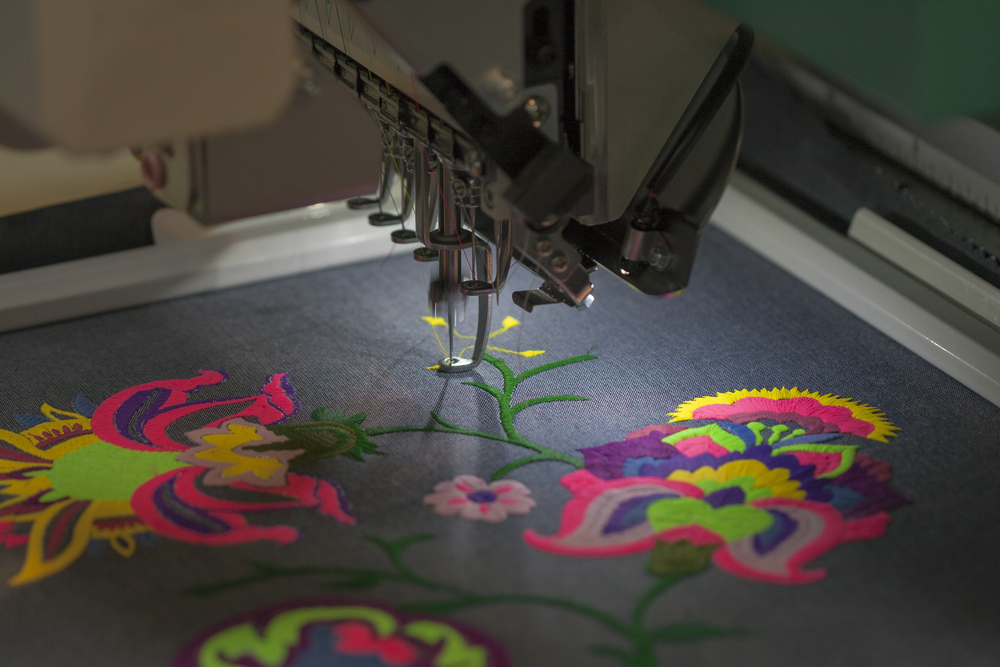Economical Digitizing for Embroidery: Precision and Detail
Economical Digitizing for Embroidery: Precision and Detail
Blog Article
Grasping the Needlework Digitizing Process: Your Ultimate Guide
Needlework digitizing is a meticulous craft that requires accuracy and knowledge to convert intricate designs into electronic formats for maker needlework. As artisans begin on this trip to understand the needlework digitizing process, an extensive understanding of the fundamentals establishes the structure for quality. However, beyond the fundamental expertise lies a realm of sophisticated software application, specialized devices, and nuanced strategies waiting to be discovered. By diving right into the subtleties of digitizing, one can open a globe of creative possibilities and elevate their embroidery projects to new elevations.

Recognizing Needlework Digitizing Essentials
Embroidery digitizing basics form the foundation whereupon detailed layouts are equated right into machine-readable styles for accurate stitching. This initial action in the needlework digitizing procedure is crucial for guaranteeing that the final embroidered item is a loyal depiction of the original design. Understanding needlework digitizing essentials includes comprehending essential concepts such as stitch types, stitch direction, thickness, rug, and pull compensation.
Sew types play an important role in establishing the aesthetic and textural outcome of the stitched layout. By picking the proper stitch type, whether it be satin, fill, or running stitch, digitizers can attain the preferred effect and boost the general quality of the needlework. Furthermore, stitch direction affects the flow and measurement of the style, while density determines the spacing and insurance coverage of the stitches.
Moreover, underlay sewing offers security to the style by securing the textile and stopping distortion throughout the embroidery procedure. Pull compensation is an additional necessary factor to consider to neutralize the all-natural propensity of textile to contract when stitched. Understanding these embroidery digitizing essentials is essential for developing professional-quality stitched products.
Selecting the Right Digitizing Software Program
Selecting the suitable digitizing software program is a crucial decision that substantially influences the efficiency and quality of the embroidery digitizing process. Digitizing for Embroidery. When choosing the ideal digitizing software program, it is important to think about aspects such as the intricacy of layouts you intend to develop, the user-friendliness of the software program, the degree of consumer assistance offered, and the compatibility with your embroidery device
There are numerous digitizing software choices offered out there, ranging from fundamental programs for novices to sophisticated software application for expert digitizers. Some prominent options include Wilcom EmbroideryStudio, Hatch Embroidery Software, and PulseID. These software use a vast array of tools and functions to assist you produce intricate designs easily.
Before choosing, it is recommended to discover the various software program options through totally free tests or trials to figure out which one finest suits your demands. Furthermore, checking out reviews and looking for referrals from knowledgeable digitizers can offer valuable understandings right into the staminas and weaknesses of each software application package (Digitizing for Embroidery). By meticulously examining your requirements and contrasting the functions of different digitizing software, you can make an educated choice that boosts your embroidery digitizing process
Digitizing Devices and Strategies

Optimizing Design Setup for Needlework
Understanding the ins and outs of design settings is basic in achieving optimum results in the embroidery digitizing procedure, building upon the foundation laid by recognizing digitizing tools and methods. When maximizing design settings from this source for embroidery, it is essential to think about variables such as stitch type, thickness, padding, draw compensation, and enrollment. Enrollment setups align various components of the design precisely, keeping overall design honesty.

Troubleshooting Common Digitizing Issues
When experiencing usual digitizing issues throughout the needlework process, it is necessary to comprehend the source and execute reliable solutions immediately. One usual problem is stitch density issues, where stitches may be also thick, causing the material to tighten, or also sparse, causing voids in the design. Adjusting the stitch density setups in the digitizing software program can help fix this problem.
An additional frequent obstacle is string breaks during the embroidery process. This can happen as a result of numerous reasons such as inaccurate tension setups, boring needles, or making use of low-quality thread. Making sure correct upkeep of the embroidery device, including routine needle adjustments and stress changes, can reduce the incident of string breaks.
Moreover, layout enrollment mistakes can result in misaligned aspects within the embroidery style. Inspecting the style positioning in the digitizing software program and making essential changes prior to sewing can help in avoiding this concern. By dealing with these usual digitizing concerns immediately and efficiently, you can guarantee a smoother embroidery process and high-grade finished products.
Conclusion
In conclusion, grasping the needlework digitizing procedure calls next page for a solid understanding of the essentials, the right choice of software program, and expertise of tools and methods. Enhancing style setups and fixing common digitizing issues are vital actions in guaranteeing top notch needlework results. By complying with these steps faithfully, one can achieve accuracy and performance in the digitizing process.
Report this page